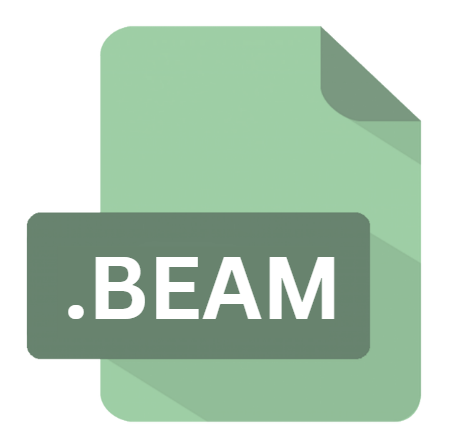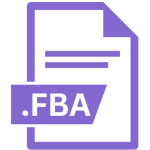.BEAM File Extension

Compiled Erlang File
| Developer | Ericsson |
| Popularity | |
| Category | Executable Files |
| Format | .BEAM |
| Cross Platform | Update Soon |
What is an BEAM file?
The .BEAM file extension is associated with compiled Erlang programs. Erlang, a programming language designed for building massively scalable soft real-time systems, has a unique compilation process that results in .BEAM files.
These files are central to the operation of the Erlang runtime system, enabling the efficient execution of Erlang code in various environments, particularly in telecommunication, messaging systems, and real-time systems.
More Information.
The .BEAM file format has its roots in the early development of Erlang. The primary goal of Erlang’s creators was to create a language and runtime environment capable of supporting distributed, fault-tolerant, soft real-time systems with requirements for high availability.
The name BEAM derives from the first names of Bogdan Haiduc and Björn Gustavsson, two key figures in the development of the Erlang virtual machine.
Initially, Erlang programs were interpreted directly, which was suitable for small-scale applications but became inefficient for larger, more complex systems.
As Erlang’s use in telecommunications and other industries grew, the need for a more efficient execution method became apparent.
This led to the development of the BEAM virtual machine and the corresponding .BEAM file format, which allowed compiled bytecode to be executed much faster and with greater efficiency than interpreting source code on the fly.
Origin Of This File.
The .BEAM file format is an integral part of the Erlang ecosystem, which originated in the late 1980s.
Erlang was developed by Ericsson to meet the growing demands for highly reliable and fault-tolerant communication systems.
The language’s design was heavily influenced by the need for systems that could handle massive amounts of concurrent connections without compromising performance or reliability.
Erlang’s compilation process involves translating high-level Erlang code into bytecode that can be executed by the Erlang Virtual Machine (EVM), also known as BEAM (Bogdan/Björn’s Erlang Abstract Machine).
The BEAM files, therefore, are the compiled bytecode that the EVM interprets and executes.
File Structure Technical Specification.
The .BEAM file is essentially a binary file that contains compiled Erlang bytecode. This bytecode is structured in a way that the BEAM virtual machine can efficiently execute it. Here’s a breakdown of the key components and structure of a .BEAM file:
- Header: The file starts with a header that includes metadata such as the Erlang version used for compilation, the module name, and other relevant details.
- Code Section: This section contains the actual bytecode instructions that the BEAM virtual machine will execute. The bytecode is a low-level, platform-independent representation of the original Erlang source code.
- Atom Table: Atoms in Erlang are constants whose value is their own name. The Atom Table section lists all the atoms used in the module, allowing them to be referenced by their index in the table.
- Import and Export Tables: These tables list the functions imported from other modules and the functions exported by the current module. This allows the Erlang system to handle function calls between different modules efficiently.
- Literal Pool: The literal pool contains constants such as numbers, strings, and tuples that are used in the bytecode. This allows for efficient memory management and reuse of literals within the code.
- Debug Information: This optional section includes information used for debugging purposes, such as line numbers and variable names. This section is not necessary for the execution of the code but is invaluable during development.
The .BEAM file format is designed to be compact and efficient, minimizing the overhead associated with executing high-level language constructs while maximizing the performance of the Erlang system.
How to Convert the File?
Converting .BEAM files is generally not a common practice, as they are specifically designed for execution within the Erlang runtime environment.
There are scenarios where you might want to decompile a .BEAM file back into Erlang source code for debugging or analysis purposes.
- Decompiling to Erlang Source: Tools like
beam_disasmandErlang External Term Format (ETF)can be used to decompile .BEAM files into a more human-readable form. However, the output is often low-level and may require significant effort to understand and modify. - Cross-compilation: If you’re working with an environment that supports both Erlang and another language that can interoperate with Erlang, you might compile code in one language into .BEAM format. For example, Elixir, a language that runs on the BEAM virtual machine, compiles down to .BEAM files, making it possible to interoperate with Erlang code.
Advantages And Disadvantages.
Advantages:
- Platform Independence: .BEAM files contain bytecode that can be executed on any platform with a BEAM-compatible virtual machine, making Erlang programs highly portable.
- Performance: Compiled .BEAM files run significantly faster than interpreted code, thanks to the optimizations performed during the compilation process.
- Concurrency and Fault Tolerance: The BEAM virtual machine is designed to handle massive concurrency and provide fault tolerance, making .BEAM files ideal for real-time, distributed systems.
- Hot Code Swapping: Erlang’s runtime allows for the hot swapping of code, meaning that .BEAM files can be updated without stopping the system, which is crucial for systems requiring high availability.
Disadvantages:
- Limited Use Outside Erlang Ecosystem: .BEAM files are specific to Erlang and are not compatible with other programming environments, limiting their usability outside the Erlang ecosystem.
- Complexity: Debugging and optimizing .BEAM files can be complex due to the low-level nature of bytecode and the intricacies of the BEAM virtual machine.
- Dependency on BEAM VM: The execution of .BEAM files relies entirely on the BEAM virtual machine, meaning that any limitations or bugs in the VM can affect the performance and stability of the compiled code.
How to Open BEAM?
Open In Windows
- Install the Erlang/OTP distribution for Windows.
- Once installed, you can open a command prompt and use the
erlcommand to start the Erlang shell. From there, you can load and run .BEAM files using thel(ModuleName).command, whereModuleNameis the name of the compiled module.
Open In Linux
- Most Linux distributions have Erlang available in their package repositories. Install it using your package manager (
sudo apt-get install erlangfor Debian-based systems orsudo yum install erlangfor Red Hat-based systems). - Start the Erlang shell from the terminal and execute the .BEAM file using the appropriate commands.
Open In MAC
- Install Erlang using a package manager like Homebrew (
brew install erlang). - Open a terminal and start the Erlang shell with the
erlcommand. Load and run the .BEAM file as you would on Windows.













